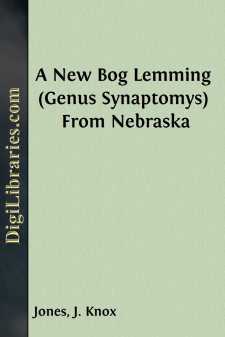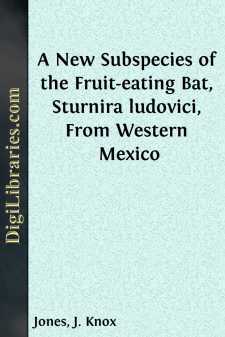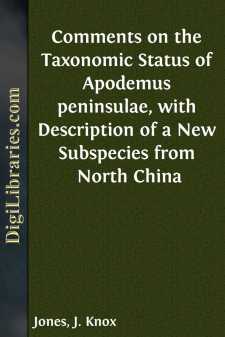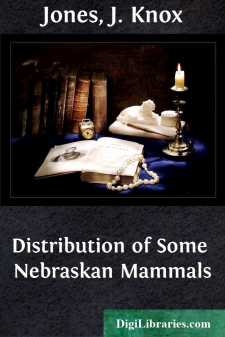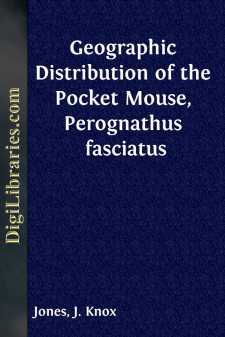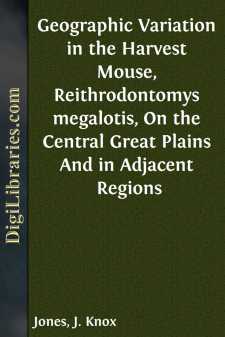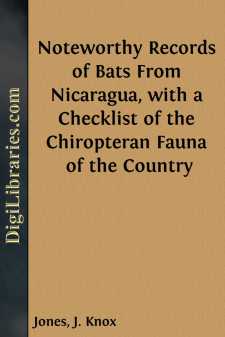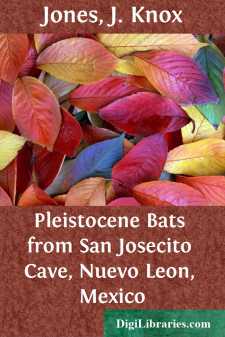Categories
- Antiques & Collectibles 13
- Architecture 36
- Art 48
- Bibles 22
- Biography & Autobiography 813
- Body, Mind & Spirit 142
- Business & Economics 28
- Children's Books 17
- Children's Fiction 14
- Computers 4
- Cooking 94
- Crafts & Hobbies 4
- Drama 346
- Education 46
- Family & Relationships 57
- Fiction 11829
- Games 19
- Gardening 17
- Health & Fitness 34
- History 1377
- House & Home 1
- Humor 147
- Juvenile Fiction 1873
- Juvenile Nonfiction 202
- Language Arts & Disciplines 88
- Law 16
- Literary Collections 686
- Literary Criticism 179
- Mathematics 13
- Medical 41
- Music 40
- Nature 179
- Non-Classifiable 1768
- Performing Arts 7
- Periodicals 1453
- Philosophy 64
- Photography 2
- Poetry 896
- Political Science 203
- Psychology 42
- Reference 154
- Religion 513
- Science 126
- Self-Help 84
- Social Science 81
- Sports & Recreation 34
- Study Aids 3
- Technology & Engineering 59
- Transportation 23
- Travel 463
- True Crime 29
J. Knox Jones
The author has not yet completed their profile.
Author's Books:
Sort by:
by:
J. Knox Jones
In the autumn of 1952, I obtained a southern bog lemming, Synaptomys cooperi, at Rock Creek State Fish Hatchery, Dundy County, in extreme southwestern Nebraska. This locality of record is the westernmost for the species in North America. Subsequently, I reported this specimen in the literature (Univ. Kansas Publ., Mus. Nat. Hist., 7:486, 1954), provisionally assigning it to Synaptomys cooperi gossii,...
more...
by:
J. Knox Jones
The fruit-eating bats of the genus Sturnira are represented on the North American mainland by two species, S. lilium and S. ludovici. The former, in most areas the smaller of the two, is widely distributed in México and Central America and is common in many places. On the other hand, S. ludovici, described by Anthony (1924:8) from near Gualea, Ecuador, generally has been regarded as rare; insofar as...
more...
by:
J. Knox Jones
The first mention of bats in Nebraska possibly was by Harrison Allen, in his "Monograph of the Bats of North America" (1864:14, 20, 30, 35, 42), who listed Nycticejus crepuscularis [= Nycticeius humeralis], Lasiurus borealis, Scotophilus carolinensis and Scotophilus fuscus [both = Eptesicus fuscus], and Scotophilus noctivagans [= Lasionycteris noctivagans], as collected in...
more...
by:
J. Knox Jones
In the past several years the United States National Museum has received a large number of mammals from central and southern Korea through the auspices of the Commission on Hemorrhagic Fever of the Armed Forces Epidemiological Board. Among these Korean collections are more than a hundred specimens of a murine rodent originally described as "Micromys speciosus peninsulae" by Oldfield Thomas but...
more...
by:
J. Knox Jones
Because military service will interrupt my study of Nebraskan mammals, I am here placing on record certain information on the geographic distribution of several species—information that is thought pertinent to current studies of some of my associates. Most of this information is provided by specimens recently collected by me and other representatives of the University of Kansas Museum of Natural...
more...
by:
J. Knox Jones
In his "Revision of the pocket mice of the genus Perognathus," Osgood (1900:18-20) reviewed the distribution, as then known, of Perognathus fasciatus and recognized two geographic races—Perognathus fasciatus [fasciatus] Wied-Neuwied in eastern Montana and Wyoming and adjacent parts of North and South Dakota, and Perognathus fasciatus infraluteus Thomas, known only from the type locality at...
more...
by:
J. Knox Jones
The western harvest mouse, Reithrodontomys megalotis, inhabits most parts of the central Great Plains and adjacent regions of tall grass prairie to the eastward, shows a marked predilection for grassy habitats, is common in many areas, and is notably less variable geographically than most other cricetids found in the same region. R. megalotis occurs (see Hall and Kelson, 1959:586, map 342) from...
more...
by:
J. Knox Jones
Nicaragua occupies a strategic position in Central America with respect to mammalian distributional patterns, but relatively little has been published concerning the fauna of the country and its zoogeographic relationships. The present paper records information on distribution, variation, and natural history of 40 species of bats from Nicaragua, 14 of which are here recorded for the first time from the...
more...
by:
J. Knox Jones
Some of the Pleistocene mammals from San Josecito Cave, near Aramberri, Nuevo León, México, collected by field parties of the California Institute of Technology under the direction of the late Professor Chester Stock, have been reported previously (see Furlong, 1943; Cushing, 1945; Stock, 1950; Hooper, 1952; Findley, 1953; Stock, 1953; Handley, 1955; Jackway, 1958). In 1950, Professor Stock loaned a...
more...


